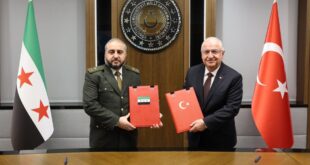 National Iranian Central Oil Company (NICOC) Managing Director Alireza Zeighami yesterday announced that the development of 18 new oil and gas fields would be put out to international tender in the first phase. He told PIN that domestic companies would implement 75 percent of the first phase projects and the remaining part would be done by foreign companies, adding if American and European companies refused to take part in the tender, other foreign bidders would be signed.
National Iranian Central Oil Company (NICOC) Managing Director Alireza Zeighami yesterday announced that the development of 18 new oil and gas fields would be put out to international tender in the first phase. He told PIN that domestic companies would implement 75 percent of the first phase projects and the remaining part would be done by foreign companies, adding if American and European companies refused to take part in the tender, other foreign bidders would be signed.
“At present, NICOC is producing 300 million cubic meters of gas in nine provinces of Iran, 65 percent of the country’s total output,” said the official.
He added the company was currently producing 145 thousand barrels of oil per day, vowing the figure would soar to 165 thousand bpd within the next two months.
“This is not the real production capacity of the company,” said Zeighami, adding its oil output would reach 320 thousand bpd by 2011 and 395 thousand bpd by 2016.
The NICOC head said the average gas production of the company would touch 335 million cubic meters and its gas condensates production would stand at 100 barrels a day in 2011.
He added NICOC’s gas and gas condensates production would be 375 million cubic meters and 110 thousand barrels daily in 2016 respectively.
“To attain the goals, the company needs to invest eight billion dollars,” Zeighami added.
He pointed to the second phase of Parsian 2 Refinery, South Gashoo Refinery, and LNG 1300 project as three underway projects of the company, adding 75 percent of the operations would be carried out by local experts.
“The first phase of Parsian-No Refinery, the development plan of Homa, Varavi, and Shanol gas fields, and the 36- and 6-inch gas condensates transmission pipelines are also ready for inauguration,” added the NICOC chief.
The company’s managing director announced that the development plan of Tangeh Bijar gas field was partly implemented and the field started production with a daily 7 million cubic meter capacity per day.
Zeighami added when Ilam Gas Refinery came on stream in the second phase, the capacity would rise to 10 million cubic meters daily.
He said five wells, Tangeh Bijar Central Facilities (TCF), and pipelines linking the wells to facilities were tested in the first phase and were ready for operation and the ISF was undergoing the last-stage test.
According to the official, power systems including UPS, MV, LV, and two power stations have been already put into operation.
Zeighami said the two 21- and 20-km-long lines that would transmit gas and gas liquids from the collection center to Ilam Refinery were undergoing last-stage test and would start work soon.
“Six wells work in the first phase of Tangeh Bijar gas field, three of which have been recently drilled and three have been repaired,” said the managing director, adding three more would be drilled for the second phase.
He added wellhead equipment would be installed and pipelines would be constructed in the second phase.
Zeighami said 1.65 trillion rials (178.3 million dollars) had been so far spent for clearing the venue of mines, designing, purchasing equipment, drilling wells, installing systems, and building pipelines, power transmission lines, and telecommunications lines.
“About 40 percent of equipment required for the development plan has been provided by domestic manufacturers, and the remaining part, due to high level of sourness of gas and lack of Iranian-made equipment, has been supplied by overseas producers,” said the NICOC head.
He added the value of his company’s products would reach 23 billion dollars by the end of current Iranian calendar year (March 19, 2008).
Zeighami said the company would earn 23 billion dollars if a barrel of its oil were sold at 50 dollars and every 1,000 cubic meters of gas at 150 dollars.
Shifting to the exhibition held on the sidelines of the third OPEC summit in the Saudi capital Riyadh, Zeighami assessed it as good, underlining the importance of the presence of state-run and private companies in the exhibit.
Riyadh played host to the third summit on Nov. 17 and 18 under three general themes: Providing Petroleum, Promoting Prosperity, and Protecting the Planet.
The summit was preceded by several activities, including a two-day symposium in which leading energy ministers and international oil experts took part.
The symposium covered topics such as “Energy for Sustainable Development”, “OPEC’s Role in Securing Oil Supplies and Boosting Stability”, and “The Future of Oil in the Global Energy Mix”.
 Eurasia Press & News
Eurasia Press & News



